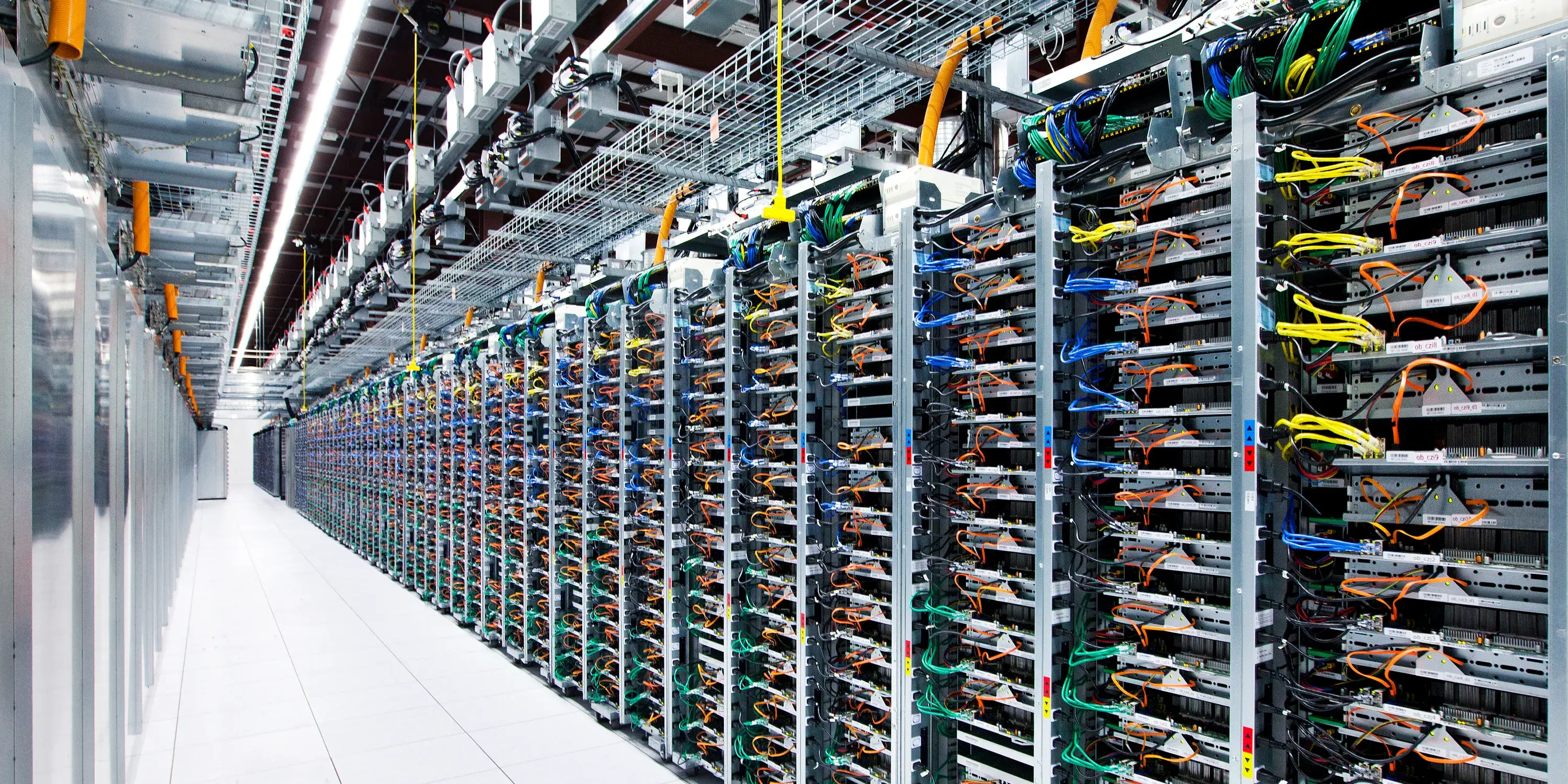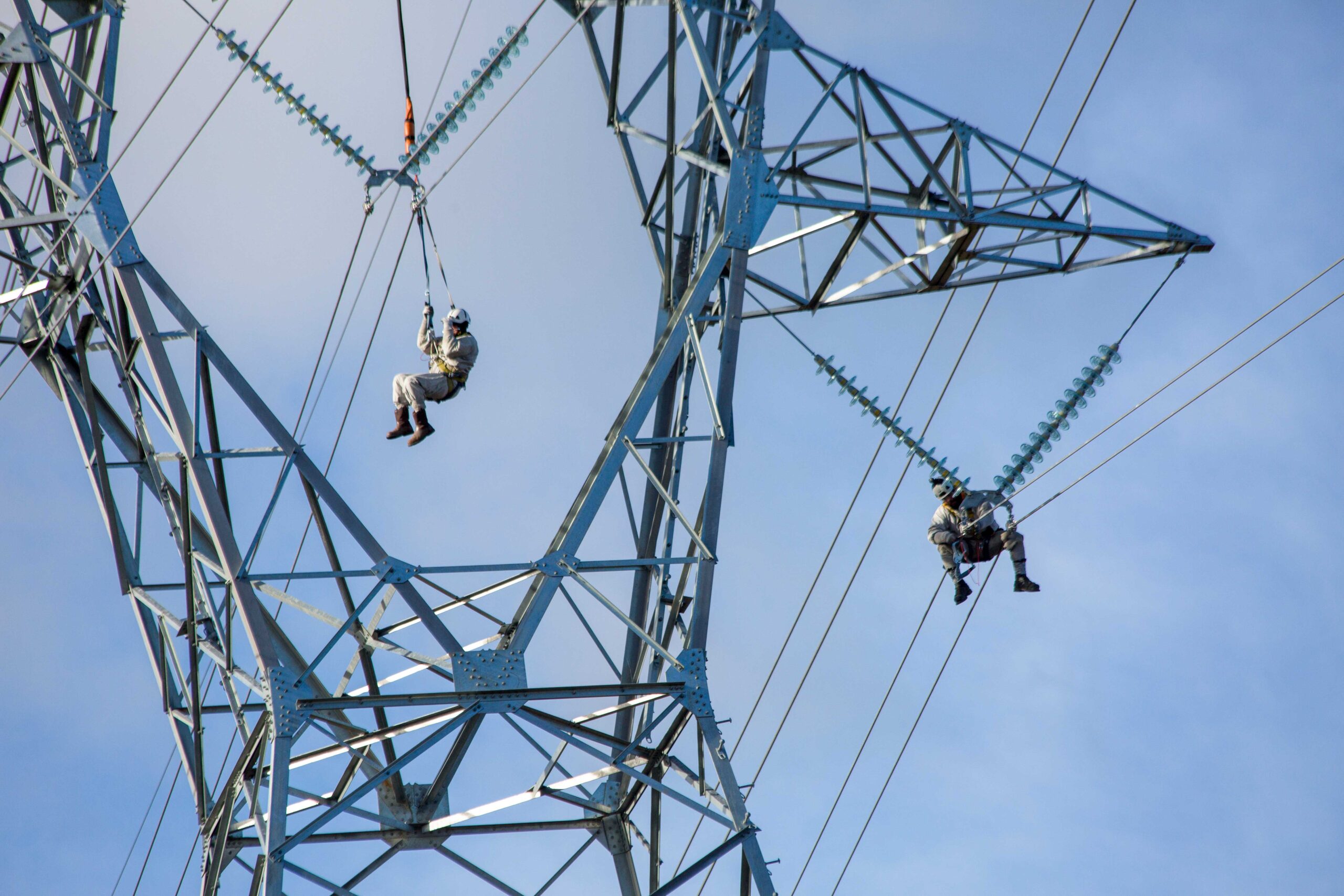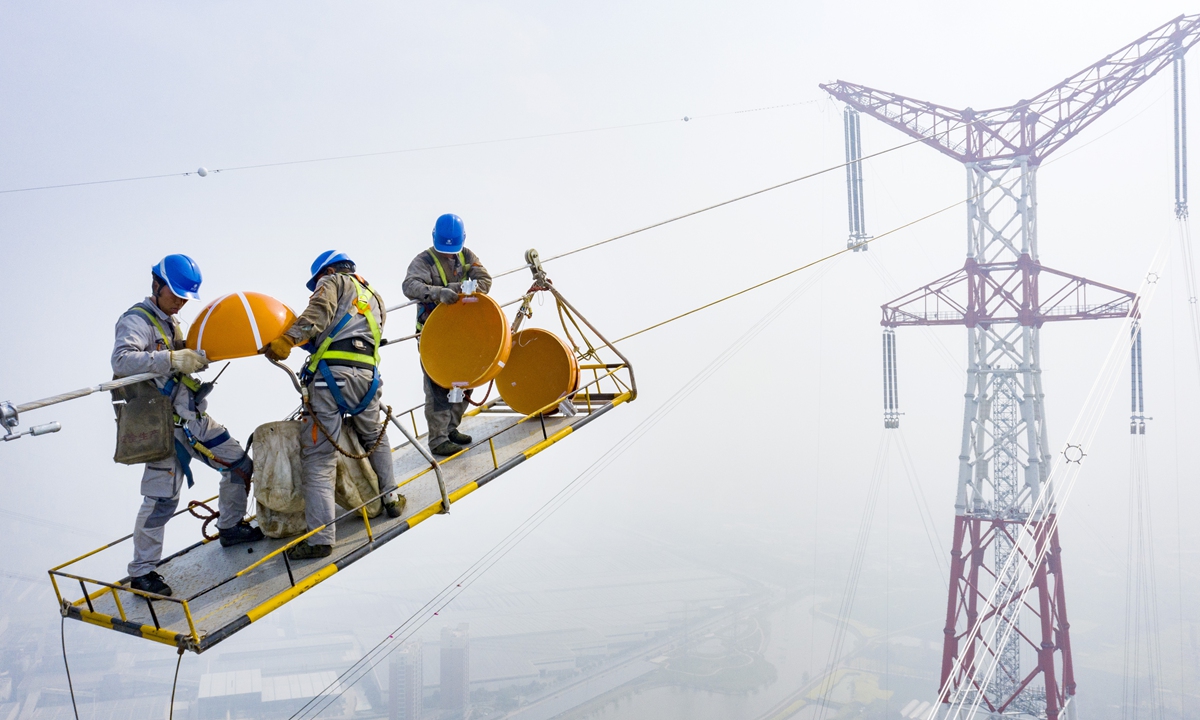

The Rise of Alternative CRE Assets
June 17, 2025
Executive Summary
At Global Storage Partners, we are committed to bringing online Alternative CRE Assets and offering these opportunities to retail and institutional investors. While we are currently focused on self-storage developments and have a tremendous amount of experience in that domain, we must keep an eye on additional classifications of alternative asset investments. This article explores the accelerating investor interest in these asset types— specifically data centers, senior housing, and energy infrastructure— driven by technological advancements and demographic shifts.
Key findings include:
- Data Centers: Experiencing rapid growth due to AI and digital transformation, with the global market projected to reach over $1 trillion by 2034 and facing critical power and sustainability challenges.
- Senior Housing: Benefiting from the aging baby boomer population, with record-high occupancy rates, constrained new supply, and strong investor demand as the 80+ demographic surges.
- Energy Infrastructure: Offering stable, high-yield income and exposure to both traditional and renewable energy growth, with the global renewable energy market expected to surpass $4 trillion by 2037.
- Investment Strategies: Outlines avenues for high-net-worth and institutional investors to access these sectors, emphasizing their potential for diversification and alignment with long-term economic and societal trends.
Structural Shifts
As traditional commercial real estate sectors face challenges from shifting work patterns and changing consumer behaviors, sophisticated investors are increasingly turning to alternative asset classes that offer compelling growth narratives backed by powerful demographic and technological tailwinds. Data centers, senior housing, and energy infrastructure represent three distinct yet complementary opportunities within the alternative commercial real estate landscape, each displaying robust fundamentals and long-term growth potential that may outpace conventional property types.
These alternative asset classes are benefiting from structural shifts in the economy and society: the explosive growth of digital data and AI computing needs, the aging of the baby boomer generation, and the ongoing transformation of energy systems. For high-net-worth investors and institutional allocators seeking both portfolio diversification and exposure to secular growth trends, these specialized property types warrant serious consideration.

Data Centers: The Critical Infrastructure of the Digital Economy
The data center sector stands at a transformative inflection point, driven by unprecedented demand for computing power and digital storage capacity. According to IMARC Group, the global data center market reached USD 213.6 billion in 2024 and is projected to expand to USD 494.5 billion by 2033, representing a compound annual growth rate (CAGR) of 9.29% during 2025-2033[2]. More recent estimates from Precedence Research suggest an even more aggressive trajectory, placing the market at USD 386.71 billion in 2025 and forecasting growth to approximately USD 1,008.65 billion by 2034, reflecting a CAGR of 11.24%[13].
The AI Revolution and Data Center Transformation
The data center industry is experiencing a fundamental transformation driven primarily by the rapid advancement of artificial intelligence. As JLL notes in their 2025 Global Data Center Outlook, "The data center industry stands at the precipice of a transformative era, driven by the relentless advancement of artificial intelligence. This technological revolution is not merely evolving the digital infrastructure landscape; it's fundamentally redefining it."[1]
This AI-driven demand is reshaping data center design, location strategies, and power requirements. A computation task that once took 32 hours can now be accomplished in just one second with the latest GPU technology, enabling AI programs to train on increasingly massive datasets[1]. The exponential improvement in processing capability is creating a virtuous cycle where faster speeds enable more sophisticated AI models, driving further demand for advanced data center infrastructure.
Regional Market Dynamics
While data centers are expanding globally, there remains significant concentration in developed economies. The United States alone accounts for over 45% of the world's data centers, with a substantial proportion clustered in Northern Virginia's "Data Center Alley"[20]. However, the landscape is evolving as emerging markets such as India, Brazil, Kenya, the UAE, and Singapore accelerate investments to establish themselves as regional hubs.
North America continues to lead in data center investments, accounting for 41% of global revenue in 2024[13]. The U.S. data center market, valued at USD 121.15 billion in 2024, is projected to reach USD 357.89 billion by 2034, growing at a CAGR of 11.44%[13]. Meanwhile, Asia Pacific is positioned for the fastest expansion, driven by substantial investments in Malaysia, India, Japan, South Korea, Australia, and Indonesia [19].
Power and Sustainability Challenges
Perhaps the most significant constraint on data center development is power infrastructure. As JLL observes, "Power infrastructure bottlenecks are a major impediment to data center development. Power scarcity garners most of the headlines, but equally as significant are the extended timelines required to build transmission lines."[1]
These challenges have fundamentally altered site selection criteria, with land now being evaluated based primarily on available power capacity and proximity to transmission lines rather than pricing or total acreage[1]. S&P Global Ratings estimates that U.S. data center power demand will increase at 12% per year until the end of 2030[17], putting further pressure on already strained electrical grids.
Data centers currently account for an estimated 1-1.5% of global electricity consumption, a figure expected to rise sharply with the growing computational demands of AI systems[20]. Consequently, sustainability has become a central focus for the sector, with increasing investment in green data centers and energy-efficient technologies[2].
Investment Landscape
The data center construction market, valued at USD 91.86 billion in 2024, is projected to reach USD 214.16 billion by 2030, reflecting a CAGR of 15.15%[19]. Despite this robust growth outlook, actual investment sales of data center assets remain relatively limited. Global data center investment sales (excluding entity trades and recapitalizations) have averaged just $7 billion annually since 2020, compared to $241 billion for office assets during the same period[1].
This disparity reflects both the specialized nature of the asset class and the tendency for data center operators to hold rather than sell performing assets. For 2025, JLL projects that "global data center trading volume is likely to record only a modest increase" despite significant investor interest, due to substantial bid-ask spreads created by rising interest rates and divergent views on relet assumptions[1].

Senior Housing: Demographic Tailwinds Drive Record Demand
The senior housing sector is experiencing a powerful resurgence, fueled by demographic shifts and post-pandemic recovery. Senior housing occupancy rates increased to 87.2% in the fourth quarter of 2024, representing a 0.7 percentage point increase from the previous quarter[7]. This trend continued into 2025, with occupancy improving to 87.4% in the first quarter, marking the 15th consecutive quarter of improvement[14].
Baby Boomer Effect Accelerates Demand
The demographic outlook for senior housing is exceptionally favorable as the oldest baby boomers turn 80 in 2025. By 2030, the U.S. population aged 80 and older is projected to grow by more than 4 million to nearly 19 million[8]. This demographic wave is already driving unprecedented demand, with the fourth quarter of 2024 setting a record high for occupied senior housing units at more than 618,000[7].
The sector's market fundamentals have strengthened considerably, with annual absorption rates exceeding 35,000 units per year over the past three years, compared to under 20,000 annually from 2015 to 2019[18]. For three consecutive years, absorption has outpaced inventory growth, resulting in significant occupancy gains and pointing to a high-demand market[18].
Supply Constraints Amplify Investment Opportunity
While demand surges, the supply of new senior housing remains constrained. Construction activity has declined for thirteen consecutive quarters, with fewer than 22,000 senior housing units under construction in the fourth quarter of 2024—the lowest level since the first quarter of 2013[7]. This supply-demand imbalance is expected to intensify, with estimates suggesting that more than 560,000 new units will be needed by 2030, yet only 191,000 are expected to be added at current development rates[8].
The limited construction pipeline is attributable to several factors, including high interest rates, rising building costs, and labor shortages[8]. As a result, many developers and investors are pivoting toward acquisitions rather than new development, finding it more cost-effective to purchase existing communities[8].
Investment Sentiment and Returns
Investor sentiment toward senior housing is decidedly bullish. According to JLL's annual Seniors Housing and Care Investor Survey, 78% of investors surveyed indicated plans to increase their investment in the sector in 2025[6]. Transaction volume is trending toward pre-pandemic levels, with annual activity reaching $15.6 billion at the end of 2024[6].
Cap rates for senior housing assets reflect the strong market fundamentals. According to Newmark, going-in capitalization rates for independent living and assisted living properties currently range from 5.75% to 7%, with Class A assets commanding the lower end of the range[11]. This pricing reflects the "robust" recovery across occupancy, rental rates, and operations, which have returned to or exceeded pre-pandemic levels[11].
Looking forward, NIC experts forecast that occupancy levels will surpass 90% by the end of 2026, "which has only happened a handful of other times since NIC MAP Vision began tracking the data"[7]. This trajectory suggests continued strength in investment performance for well-positioned senior housing assets.

Energy Infrastructure: The Backbone of Essential Services
Energy infrastructure represents the third pillar of alternative CRE investment opportunities, combining attractive income characteristics with exposure to both traditional and renewable energy transitions. This sector encompasses a vast network of physical assets that connect energy production to residential end-users and industries across the economy.
Infrastructure Components and Investment Characteristics
The U.S. energy infrastructure network includes over 100,000 miles of gathering systems, approximately 500 processing plants, more than 200,000 miles of natural gas pipelines, 80,000 miles of crude oil pipelines, and nearly 1,500 above-ground terminals, among other critical components[10].
From an investment perspective, energy infrastructure offers compelling financial attributes. According to Tortoise Capital, the sector typically provides high dividend yields averaging between 6% and 7%, appealing to income-oriented investors[10]. These assets also benefit from regulated returns generally ranging between 10% and 20% over the past 20 years, providing a level of stability and predictability to cash flows[10].
Renewable Energy Growth Trajectory
Within the broader energy infrastructure landscape, renewable energy is experiencing particularly robust growth. The global renewable energy market is valued at USD 1.5 trillion in 2025 and is projected to grow at an annual rate of 8.6% until 2037, when it is expected to surpass USD 4 trillion[9]. On the clean or low-carbon energy landscape, the U.S. nuclear industry is experiencing a revival, driven by surging electricity demand (especially from AI data centers), new federal incentives, and state-level pro-nuclear actions.
Currently, renewable energy sources contribute approximately 30% of global energy consumption, a proportion that continues to increase as countries and corporations pursue decarbonization initiatives[9]. This growth is primarily driven by increasing demand for clean energy to mitigate climate change impacts and enhance energy security worldwide[9].
Diversification and Portfolio Benefits
Energy infrastructure offers modest but stable growth prospects, driven by population increase, GDP expansion, and growing energy production[10]. A key advantage for investors is the sector's limited capital investment needs relative to cash flow generation, allowing for meaningful free cash flow after dividend distributions[10].
When compared to other infrastructure sectors, energy infrastructure stands out for its income-generating potential. While power infrastructure (4% average yield), communication infrastructure (4% average yield), and transportation infrastructure (3% average yield) offer lower income returns, energy infrastructure's 6-7% average yield provides superior current income[10].
Investment Strategies and Market Access
For high-net-worth and institutional investors seeking exposure to these alternative CRE sectors, multiple avenues exist, each with distinct risk-return profiles and liquidity characteristics.
Data Centers
Investment in data centers can be accessed through publicly traded REITs focused on digital infrastructure, private equity funds specializing in the sector, or direct investment in development projects. REITs offer the advantage of liquidity and professional management but may trade at premiums or discounts to net asset value based on market sentiment.
For investors considering direct exposure, JLL notes that 2025 will be "another record year for development financing," with an estimated 10 GW projected to break ground globally, requiring approximately $170 billion in either development or permanent financing[1]. This creates opportunities for private debt and equity investors to participate in the sector's growth.
Senior Housing
Senior housing investment options include publicly traded healthcare REITs, private real estate funds, and direct ownership of facilities. The operational intensity of senior housing makes operator selection and asset management particularly crucial success factors in this sector.
According to JLL research, 50% of investors surveyed predicted assisted living to be the biggest investment opportunity in senior housing over the next 12 months, followed by independent living, skilled nursing, and active adult communities[6]. Investors increasingly favor luxury senior housing targeting wealthier baby boomers, as this demographic has both the financial means and desire for high-end amenities[8].
Energy Infrastructure
Energy infrastructure investments can be accessed through master limited partnerships (MLPs), infrastructure funds, publicly traded utilities, and private infrastructure vehicles. Each approach offers different exposure to the various sub-sectors of energy infrastructure.
For renewable energy specifically, investors can consider renewable yieldcos (similar to REITs), green bonds, and specialized private equity funds focusing on clean energy development and operation. These vehicles provide targeted exposure to the growth of sustainable energy infrastructure while offering varying degrees of current income and growth potential.

Strategic Positioning for Alternative CRE Success
Data centers, senior housing, and energy infrastructure represent compelling alternative CRE investments supported by powerful structural tailwinds. While each sector offers unique attributes and risk factors, all three share common characteristics that make them attractive additions to diversified real estate portfolios: they are supported by long-term demographic or technological trends, they serve essential economic functions, and they are experiencing favorable supply-demand dynamics.
For data centers, the AI revolution and broader digital transformation trends suggest continued robust demand growth, with successful investments requiring deep understanding of power dynamics and technological evolution. The sector's expected compound annual growth rate of 9-11% through the next decade vastly outpaces most traditional property types.
In senior housing, the demographic wave of aging baby boomers is only beginning to impact the market, with the most significant demand surge still ahead as the 80+ population grows by millions over the coming years. With occupancy already at post-pandemic highs and new supply severely constrained, well-located and professionally managed senior housing assets are positioned for strong operational performance.
Energy infrastructure combines attractive current yield with exposure to both traditional energy systems and the ongoing transition to renewable sources. As the global renewable energy market expands at 8.6% annually toward a projected $4 trillion size by 2037, infrastructure that supports clean energy generation, storage, and distribution offers particularly compelling investment prospects.
For sophisticated investors seeking diversification beyond conventional office, retail, multifamily, and industrial property types, these alternative CRE sectors warrant serious consideration as strategic portfolio allocations aligned with powerful macro trends reshaping the global economy.
Sources:
[1] 2025 Global Data Center Outlook - JLL https://www.us.jll.com/en/trends-and-insights/research/data-center-outlook
[2] Data Center Market Size, Share, Growth, Trends 2025-2033 https://www.imarcgroup.com/data-center-market
[3] Data Center Market Size, Share | Industry Trend & Forecast 2030 https://www.industryarc.com/Report/19401/data-center-market.html
[4] Data centers at the crossroads of technology and resilience - PwC https://www.pwc.com/us/en/industries/tmt/library/hyperscale-data-center.html
[5] 2025 Seniors Housing & Care Investor Survey and Trends - JLL https://www.jll.com/en-us/insights/market-perspectives/seniors-housing-care-investor-survey-and-trend-outlook
[6] Interest in senior living and care investments surges: report https://www.mcknightsseniorliving.com/news/interest-in-senior-living-and-care-investments-surges-report/
[7] Occupied Senior Housing Units Reach New High https://www.nic.org/news-press/occupied-senior-housing-units-reach-new-high/
[8] Aging Boomers Could Soon Revive Senior Housing - CRE Daily https://www.credaily.com/briefs/aging-boomers-could-soon-revive-senior-housing/
[9] Renewable Energy Market - Global Industry Overview, Trends, and ... https://www.altenergymag.com/news/2025/04/10/renewable-energy-market-global-industry-overview-trends-and-forecast-by-2037/45053/
[10] How Energy Infrastructure is Powering the Future - Tortoise Capital https://tortoiseadvisors.com/insights-education/how-energy-infrastructure-is-powering-the-future/
[11] Newmark: Assisted Living Cap Rates In 6.75% To 7% Range https://seniorhousingnews.com/2025/03/05/newmark-assisted-living-cap-rates-in-6-75-to-7-range/
[12] The cost of compute: A $7 trillion race to scale data centers - McKinsey https://www.mckinsey.com/industries/technology-media-and-telecommunications/our-insights/the-cost-of-compute-a-7-trillion-dollar-race-to-scale-data-centers
[13] Data Center Market Size, Share, and Trends 2025 to 2034 https://www.precedenceresearch.com/data-center-market
[14] 2025 Senior Housing Market Update - Multi-Housing News https://www.multihousingnews.com/2025-senior-housing-market-updates/
[15] 2025 U.S. Data Center Market Outlook | Newmark https://www.nmrk.com/insights/market-report/2025-us-data-center-market-outlook
[16] Senior Living Industry Faces Improving Investment Outlook in 2025 https://seniorhousingnews.com/2025/03/26/senior-living-industry-faces-improving-investment-outlook-in-2025/
[17] 8 Trends That Will Shape the Data Center Industry In 2025 https://www.datacenterfrontier.com/cloud/article/55253151/8-trends-that-will-shape-the-data-center-industry-in-2025
[18] 4 Senior Housing Trends to Know for 2025 - NIC MAP https://www.nicmap.com/blog/4-senior-housing-trends-to-know-for-2025/
[19] Data Center Construction Market Report 2025 - Business Wire https://www.businesswire.com/news/home/20250506817472/en/Data-Center-Construction-Market-Report-2025-Investment-Prospects-in-9-Regions-and-53-Countries---ResearchAndMarkets.com
[20] This is the state of play in the global data centre gold rush https://www.weforum.org/stories/2025/04/data-centre-gold-rush-ai/
[21] Global Power Market Growing at 4.89% CAGR During 2025-2030 ... https://www.einpresswire.com/article/814671661/global-power-market-growing-at-4-89-cagr-during-2025-2030-forecasts-mordor-intelligence
[22] [PDF] Powering through: Energy infrastructure across inflationary cycles https://energy-infrastructure-partners.com/wp-content/uploads/2024/04/20240416_Whitepaper_Inflation_A4_web.pdf
[23] Senior Housing Occupancy Continues Climbing in First Quarter 2025 https://www.nic.org/blog/senior-housing-occupancy-continues-climbing-in-first-quarter-2025/
[24] Senior Living Investment in 2025: A Resilient Market Poised for Growth https://www.linkedin.com/pulse/senior-living-investment-2025-resilient-market-poised-obske
[25] Senior Living Investment Gap Continues to Widen Amid Slow Rate ... https://seniorhousingnews.com/2024/11/12/senior-living-investment-gap-continues-to-widen-amid-slow-rate-of-new-development/
[26] Texas' Energy Infrastructure and CRE https://www.ciptexas.com/texas-energy-infrastructure
[27] ENERGY INFRASTRUCTURE REINVESTMENT | Department of ... https://www.energy.gov/lpo/energy-infrastructure-reinvestment
[28] Institutional Allocations to Private Infrastructure, CRE Go Up https://www.credaily.com/briefs/institutional-allocations-to-private-infrastructure-cre-go-up/
[29] Infrastructure Investment and Jobs Act | Department of Energy https://www.energy.gov/gdo/infrastructure-investment-and-jobs-act
[30] President Biden's Infrastructure Investment & Jobs Act (IIJA) https://verdani.com/sustainability-industry-insights/president-bidens-infrastructure-investment-and-jobs-act-iija
[31] Will renewable energy and digital infrastructure (REDI) become the ... https://www.oxfordeconomics.com/resource/will-renewable-energy-and-digital-infrastructure-become-the-next-golden-child-of-cre/
[32] [PDF] A study of allocations to alternative investments by institutions and ... https://institutional.fidelity.com/app/proxy/content?literatureURL=%2F9909709.PDF
[33] Asset Allocation to Alternative Investments | CFA Institute https://www.cfainstitute.org/insights/professional-learning/refresher-readings/2025/asset-allocation-to-alternative-investments
[34] Life Science: The Top Institutional Alternative Asset Class - CRE Daily https://www.credaily.com/briefs/life-science-the-top-institutional-alternative-asset-class/
[35] How institutions are invested in real estate headed into 2025 https://www.cohenandsteers.com/insights/the-real-estate-reel-how-institutions-are-invested-in-real-estate-headed-into-2025/
[36] [PDF] Real Estate Market Update: Data Centers - Summer 2024 https://www2.hl.com/pdf/2024/real-estate-market-update-data-centers-summer-2024.pdf
[37] Renewable Energy Infrastructure investment trust sector yields near ... https://professionalparaplanner.co.uk/renewable-energy-infrastructure-investment-trust-sector-yields-near-all-time-highs/
[38] CRE as an asset class: the long-term attraction - JLL https://www.jll.com/en-us/insights/cre-as-an-asset-class-the-long-term-attraction
[39] Investing in the rising data center economy - McKinsey https://www.mckinsey.com/industries/technology-media-and-telecommunications/our-insights/investing-in-the-rising-data-center-economy



